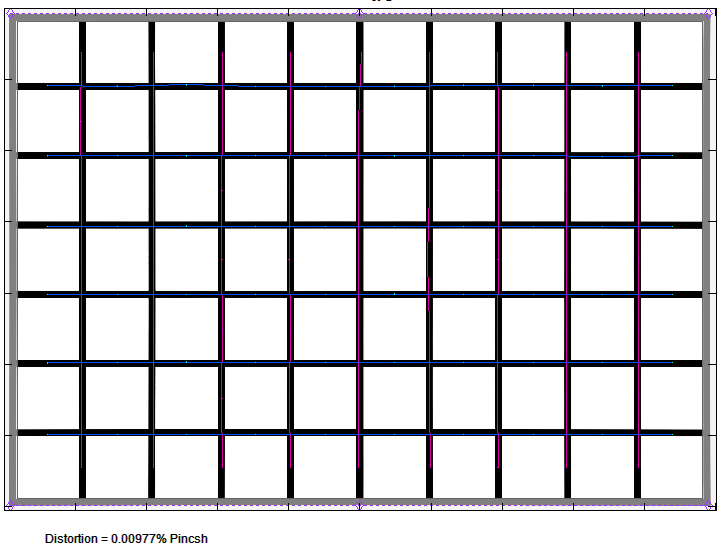|
Samyang 135mm T2.2 ED UMC CINE DS ( 135mm f/2 ED UMC ) - Review / Test Report - Analysis |
|
Lens Reviews -
Canon EOS (Full Format)
|
|
Page 2 of 3

Distortion
Samyang lenses aren't exactly renowned for low distortions but this time, they outdid themselves. Images taken with the Samyang 135mm T2.2 are essentially free of distortions.

Vignetting
The vignetting is generally well controlled for a full format lens. At fully open aperture there is some visible light falloff (~1.7EV) which is about average in this class. At T2.8 (thus roughly f/2.8) the issue is reduced and not really relevant anymore from T4 onward.

MTF (resolution)
Samyang often impressed us regarding the resolution characteristic of their products and it happened again here. The center quality is already very good at T2.2 and there's only a minimal decrease in border/corner resolution. The contrast is somewhat reduced here though. The peak performance is reached between T4 and T5.6 where things are about as good as it gets these days. Diffraction is starting to have an impact at T11 but the setting remains easily usable. Field curvature is essentially absent. It is worth to mention that a few LW/PHs were surely lost due to the mentioned (irremovable) third-party filter.
The centering quality of the tested sample was good.
Please note that the MTF results are not directly comparable across the different systems!
Below is a simplified summary of the formal findings. The chart shows line widths per picture height (LW/PH) which can be taken as a measure for sharpness.
If you want to know more about the MTF50 figures you may check out the corresponding Imatest Explanations

Chromatic Aberrations (CAs)
Lateral chromatic aberrations (color shadows at hard contrast transitions) are very unobtrusive with an average pixel width in the 0.2-0.3px range at the image corners.

Bokeh
Regarding its ultra large aperture nature, it's also interesting to have a look at the bokeh (quality of the out-of-focus blur) of the Samyang lens.
The out-of-focus blur in the critical image background is quite smooth although it stays short of the best here. The foreground blur is somewhat busy.
 The rendition of out-of-focus highlights isn't perfect. As you can see below, the inner zone has a stripe-like substructure. The highlight shape is circular at T2.2 - at least near the image center - but the edgy aperture shape is already slightly visible at T2.8. This is in so far surprising as Samyang claims to have incorporated circular aperture blades which should have done better in this respect.
The rendition of out-of-focus highlights isn't perfect. As you can see below, the inner zone has a stripe-like substructure. The highlight shape is circular at T2.2 - at least near the image center - but the edgy aperture shape is already slightly visible at T2.8. This is in so far surprising as Samyang claims to have incorporated circular aperture blades which should have done better in this respect.
As so often, the shape of the highlights does also deteriorate towards the image corners ("cat's eyes"). This is a vignetting effect that can be reduced by stopping down.

Bokeh Fringing
Large aperture lenses tend to suffer from bohek fringing - thus a green (background) and purple (foreground) color tint in the out-of-focus transition zones. However, the effect is barely visible on the Samyang 135mm T2.2 even at max aperture. This is quite baffling because it's a rather rare characteristic.
|
Move the mouse cursor over the f-stop marks below to observe the respective LoCAs
|
| T/2.2 |
T/2.8 |
T/4 |
T/5.6 |
|

|
|